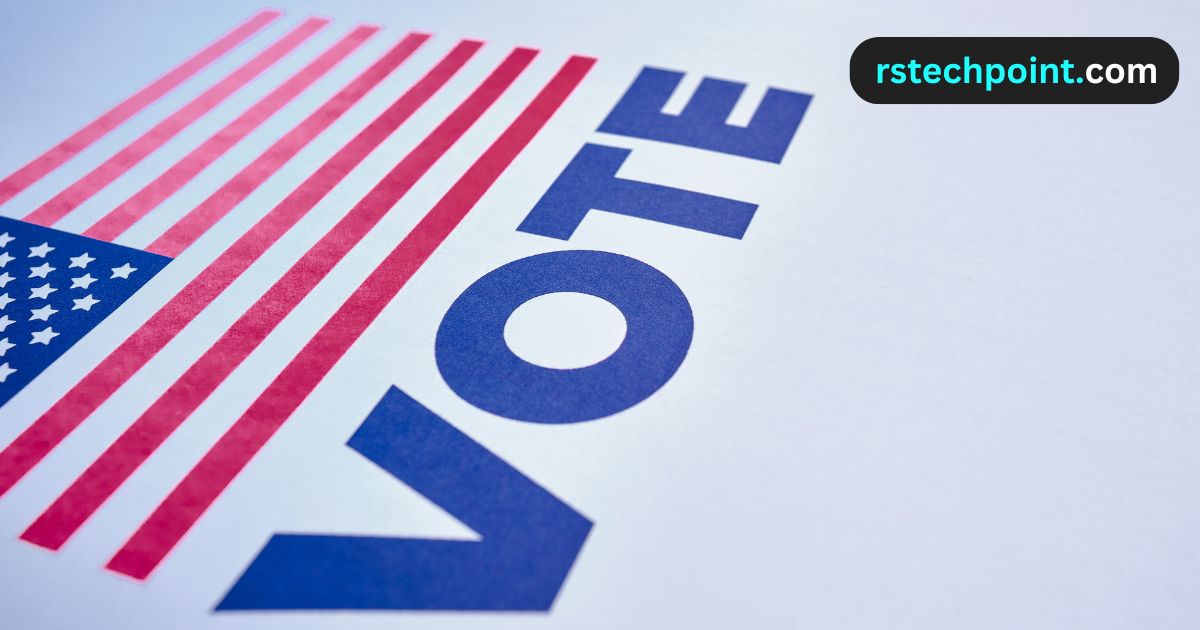In the United States, voting is a fundamental civic duty and right that enables people to elect leaders, influence policy, and take part in democracy. Understanding the voting process is crucial, regardless of whether you’re a first-time voter or someone wishing to brush up on your skills. The registration process, various voting procedures, prerequisites, and important dates are all covered in detail in this tutorial on how to Vote in the U.S.

Where and when to cast your ballot
To make voting convenient for you, the majority of states and territories provide flexible alternatives. The alternatives listed below could be available in your state.
1. Eligibility to Vote in the U.S.
To vote in the United States, you must meet the following eligibility requirements:
- Be a U.S. citizen.
- Be at least 18 years old on or before Election Day.
- Meet the residency requirements in the state where you are voting.
- Not be disqualified due to a felony conviction (requirements vary by state).
If you’re unsure of your eligibility, you can check with your state’s election office or visit official voting resources like the U.S. Election Assistance Commission.
2. Registering to Vote
Before you can vote, you must be registered. The registration process varies slightly by state but generally follows these steps:
Check Your Registration Status
- If you’ve voted before, check your voter registration status to ensure it’s up-to-date, especially if you’ve recently moved or changed your name.
- You can check your registration status online at Vote.org or your state’s official election website.
Ways to Register
- Online Registration: Many states offer online registration, where you can fill out and submit your registration form on the state’s official election website.
- In-Person Registration: You can register to vote in person at various government offices, including your state’s Department of Motor Vehicles (DMV), public assistance offices, and local election offices.
- Mail-In Registration: Download and fill out the National Mail Voter Registration Form, then mail it to your state’s election office. Some states may have their own specific mail-in forms, so check with your local election office.
Registration Deadlines
- Be aware of voter registration deadlines. Deadlines can vary from 15 to 30 days before Election Day, depending on your state. Visit Vote.org or your state’s election website for specific deadlines.
3. Methods of Voting
Once you’re registered, you’ll need to decide how you want to vote. The U.S. offers several voting methods to accommodate different preferences and needs:
In-Person Voting on Election Day
- Traditional in-person voting takes place on Election Day, which is held on the first Tuesday after the first Monday in November. In-person voting typically occurs at polling places, which are assigned based on your address.
- Polling places can be schools, community centers, or other local facilities. Use your state’s election website to find your designated polling place.
Early Voting
- Early voting allows you to cast your vote before Election Day. Each state has its own early voting period, which can start as early as 45 days before the election.
- Early voting is usually held at specific locations such as county election offices and other designated voting centers.
Absentee Voting / Vote-by-Mail
- Absentee voting, also called vote-by-mail, allows voters to mail in their ballots instead of voting in person.
- You may need to request an absentee ballot through your local election office, and some states require an excuse, like illness or military service, to qualify Vote in the U.S for absentee voting.
- During the COVID-19 pandemic, many states expanded vote-by-mail options, and some states, like Colorado and Oregon, conduct elections entirely by mail.
4. How to Fill Out Your Ballot
Whether you vote in person or by mail, understanding how to correctly fill out your ballot is important to ensure your vote counts.
Marking the Ballot
- Follow the instructions on the ballot carefully. Some ballots may ask you to fill in a bubble, mark an “X,” or select an option electronically.
- Review each race and measure thoroughly to ensure you’ve made the selections you intended.
Voting for Candidates and Measures
- Each ballot will have options to vote for candidates in various offices (e.g., president, senator, representative) and may also include local and state measures.
- If there’s a candidate or measure you are unsure about, it’s okay to leave it blank. Only the races and measures you vote on will count.
Double-Check Your Ballot
- Once you’ve completed your selections, double-check your Vote in the U.S to ensure accuracy. Mistakes, like selecting too many candidates in a race, can invalidate your vote in that race.
Submitting Your Ballot
- If you’re voting by mail, make sure to follow the instructions for sealing and signing the envelope. Some states require a witness signature, so double-check if that applies to your state.
- Send in your mail ballot by the specified deadline. If mailing, consider sending it early to avoid delays.

5. Finding Your Polling Place and Election Dates
To find your polling place and important dates, use resources like Vote.org or your state’s election office website. These platforms provide information on:
- Your designated polling location and its hours.
- Important dates, including the early voting period, absentee ballot deadlines, and Election Day.
If you’re voting in person, check the hours of operation for your polling location, as times may vary by state.
6. What to Bring to the Polls
Some states require voter identification to vote in person. Check your state’s specific ID requirements, as they vary widely. Acceptable IDs might include:
- Driver’s license or state ID.
- Passport.
- Voter registration card.
- Student ID (in some states).
If you don’t have a valid ID, some states allow you to vote using a provisional ballot. This means your vote will be counted once your identity is verified.
7. Voter Rights and Assistance
It’s essential to know your rights as a voter and where to get assistance if needed:
- Accessible Voting: All polling locations are required by federal law to provide accessible voting options for voters with disabilities.
- Assistance with Language: If you need help due to language barriers, many polling locations provide assistance in multiple languages, especially in areas with large non-English-speaking populations.
- Provisional Ballots: If there’s an issue with your registration or ID, you have the right to request a provisional ballot. It will be counted once election officials confirm your eligibility.
- Voter Intimidation: Voter intimidation is illegal. If you experience or witness any form of intimidation, report it to a poll worker, your local election office, or a voter protection hotline.
8. Understanding Key Voting Terms
Here’s a quick glossary of common voting-related terms to help you navigate the process:
- Absentee Ballot: A ballot that you can complete and mail if you are unable to vote in person on Election Day.
- Early Voting: A period before Election Day when voters can cast their ballots in person at designated locations.
- Provisional Ballot: A ballot used when there is a question about a voter’s eligibility, counted only after eligibility is verified.
- Poll Worker: A person working at the polling place who can help with questions or assist in the voting process.
9. Important Voting Deadlines and Resources
To ensure you don’t miss important deadlines, set reminders or mark your calendar for:
- Voter registration deadlines.
- Early voting period start and end dates.
- Absentee ballot request and submission deadlines.
- Election Day: The first Tuesday after the first Monday in November.
Helpful Resources:
- Vote.org: Check registration status, find polling places, and access state-specific voting information.
- U.S. Election Assistance Commission: Offers information on voting procedures, accessibility, and more.
- State Election Office Websites: Each state’s website has information on registration, polling locations, and voting options.
10. Why Your Vote Matters
Voting is a way to make your voice heard on the issues that matter most to you. Whether it’s electing leaders who represent your values or supporting initiatives that impact your community, voting empowers you to shape the future. Every vote contributes to the democratic process and influences the decisions that will shape our nation’s future.
Conclusion
Voting in the United States can appear complicated, but it can be confidently navigated by breaking it down into small steps. Every step of the voting process, from registering to choosing your chosen mode and casting your ballot, is an opportunity to participate in democracy. Keep in mind that voting is a privilege and a right, and that your involvement counts.
You’ll be ready to participate in the next elections and make wise decisions if you adhere to our guide. Your voice is vital in determining the future, whether you are casting a ballot in a local, Vote in the U.S state, or federal election.
